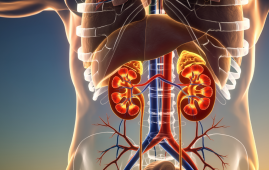

Researchers in China evaluated the relationship between egg consumption and coronary artery disease (CAD) at different genetic susceptibilities in a prospective cohort study published in The American Journal of Clinical Nutrition. They discovered that genetic propensity interacts synergistically with an elevated risk of CAD associated with egg consumption.
Background
Coronary Artery Disease, a leading cause of mortality and disability globally, has been linked to genetic markers known as single nucleotide polymorphisms (SNPs), which can be quantified to help forecast an individual’s chance of developing CAD. Furthermore, modifiable lifestyle factors like as nutrition are known to be connected with the risk of CAD. However, there is limited data on the possible impact of dietary variables on the risk of CAD in people with various genetic backgrounds.
While eggs are a good source of dietary protein, lecithin, and unsaturated fatty acids, they are also high in cholesterol. Although the American Heart Association suggests eating up to one whole egg per day, this suggestion does not take into account genetic variations between cultures. Furthermore, past population-based research show contradictory information about the relationship between egg consumption and the incidence of CAD. As a result, the current study sought to evaluate the potential role of genetic vulnerability in the link between egg consumption and the risk of incident CAD. In terms of public health, it intended to determine the demographic of people who would gain the most from eating less eggs.
About the Study
The current analysis comprised 34,111 people with eligible genotype data and no CAD at the start of the “prediction for atherosclerotic cardiovascular disease risk in China” (China-PAR) project. Missing data on egg intake and a history of chronic conditions such as cancer, end-stage renal disease, or cardiovascular disease were among the exclusion criteria.
The average age of the participants was 52.3 years, with 41.8% being male. Food frequency questionnaires were utilized to assess individuals’ egg consumption at both the baseline and follow-up visits. At the start, participants consumed eggs at rates of 1 egg per week (15.61%), 1 to 3 eggs per week (23.68%), 3 to 6 eggs per week (24.5%), 6 to 10 eggs per week (17.81%), and 10 eggs per week (18.39%).
The researchers created a combined predefined polygenic risk score (PRS) based on 540 SNPs for CAD and related variables to measure genetic susceptibility. Blood samples from participants were utilized for genotyping, and each individual’s PRS was computed. Other covariates, such as sociodemographic characteristics and traditional risk factors such as family history of CAD, smoking, alcohol consumption, intake of high-cholesterol foods, body mass index, hypertension, diabetes, hypercholesterolemia, and physical activity, were also assessed using questionnaires. A cohort-stratified Cox proportional hazards regression model was used in the statistical studies to evaluate the hazard ratio (HR) for incident Coronary Artery Disease linked with PRS and egg consumption.
Results and Discussion
Increased egg consumption was observed to increase the prevalence of hypertension and diabetes, as well as the risk of incident CAD. During a median follow-up of 11.7 years, the patients reported 1,128 instances of CAD. The cumulative incidence of CAD was observed to be highest in those who consumed 10 eggs per week (HR = 1.42). Furthermore, it was discovered that the probability of incident CAD had a linear connection with PRS. Individuals with a higher genetic risk (standard deviation of PRS) had a considerably higher incidence of CAD than those with a lower genetic risk.
Furthermore, it was discovered that greater egg consumption raised the incidence of CAD in both low genetic risk (HR = 1.05) and high genetic risk (HR = 1.10) persons. However, higher egg consumption had a greater impact on CAD risk in those with a high hereditary risk. Overall, the researchers detected an increasing trend in incident CAD in persons with higher egg consumption and genetic predisposition, as calculated by HRs and 10-year cumulative rates.
This study discovered a substantial synergistic interaction between egg consumption and genetic characteristics for the first time, showing that the link between egg consumption and CAD risk may not be uniform across people with different genetic origins. The study’s strengths include long-term participant follow-up, a large sample size, and thorough quality control. The study, however, does not take into account the subjects’ overall cholesterol or energy intake. To understand the biological mechanisms behind the relationships revealed in this study, more research is needed.
Conclusion
Overall, this large, prospective investigation shows that those with higher egg consumption and genetic propensity had an increased risk of incident CAD. The findings of this study have the potential to be used to produce individualized dietary recommendations for those who have a higher genetic risk of CAD, thereby aiding in disease prevention and improving public health outcomes.
For more information: Egg consumption and risk of coronary artery disease, potential amplification by high genetic susceptibility: a prospective cohort study, The American Journal of Clinical Nutrition
more recommended stories
 Spatial Computing Explains How Brain Organizes Cognition
Spatial Computing Explains How Brain Organizes CognitionKey Takeaways (Quick Summary) MIT researchers.
 Gestational Diabetes Risk Identified by Blood Metabolites
Gestational Diabetes Risk Identified by Blood MetabolitesKey Takeaways (Quick Summary for Clinicians).
 Phage Therapy Study Reveals RNA-Based Infection Control
Phage Therapy Study Reveals RNA-Based Infection ControlKey Takeaways (Quick Summary) Researchers uncovered.
 Pelvic Floor Disorders: Treatable Yet Often Ignored
Pelvic Floor Disorders: Treatable Yet Often IgnoredKey Takeaways (Quick Summary) Pelvic floor.
 Urine-Based microRNA Aging Clock Predicts Biological Age
Urine-Based microRNA Aging Clock Predicts Biological AgeKey Takeaways (Quick Summary) Researchers developed.
 Circadian Control of Neutrophils in Myocardial Infarction
Circadian Control of Neutrophils in Myocardial InfarctionKey Takeaways for HCPs Neutrophil activity.
 E-Cigarette Use and Heart Attack Risk in Former Smokers
E-Cigarette Use and Heart Attack Risk in Former SmokersKey Takeaways for Clinicians and Nurses.
 36-Week Pre-eclampsia Screening May Reduce Term Risk
36-Week Pre-eclampsia Screening May Reduce Term RiskA New Preventive Strategy for Term.
 Cardiovascular Risk and Sudden Cardiac Death in Diabetes
Cardiovascular Risk and Sudden Cardiac Death in DiabetesRising Sudden Cardiac Death (SCD) Risk.
 Poor Kidney Function and Alzheimer’s Biomarkers Explained
Poor Kidney Function and Alzheimer’s Biomarkers ExplainedPoor kidney function may influence levels.

Leave a Comment